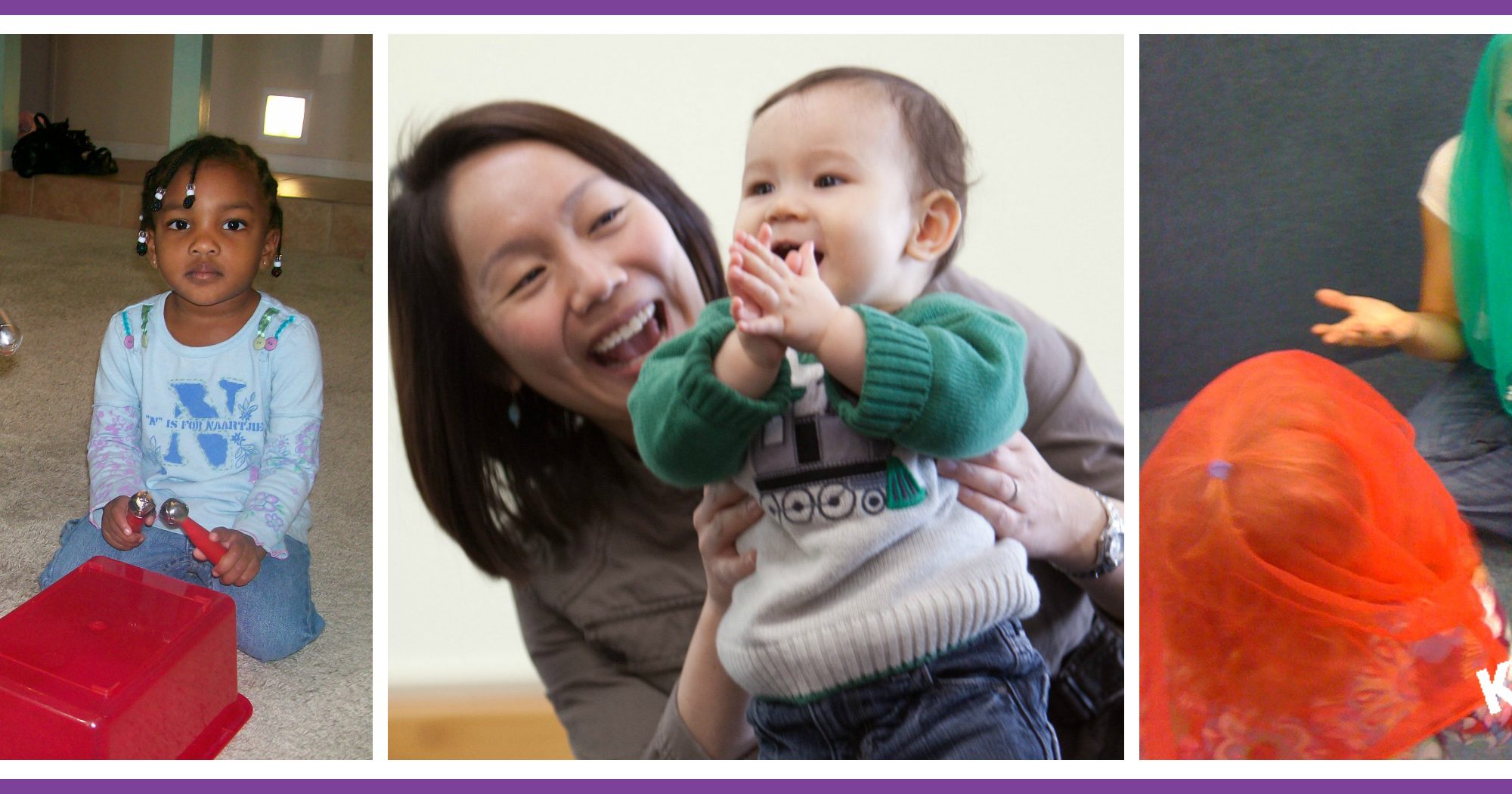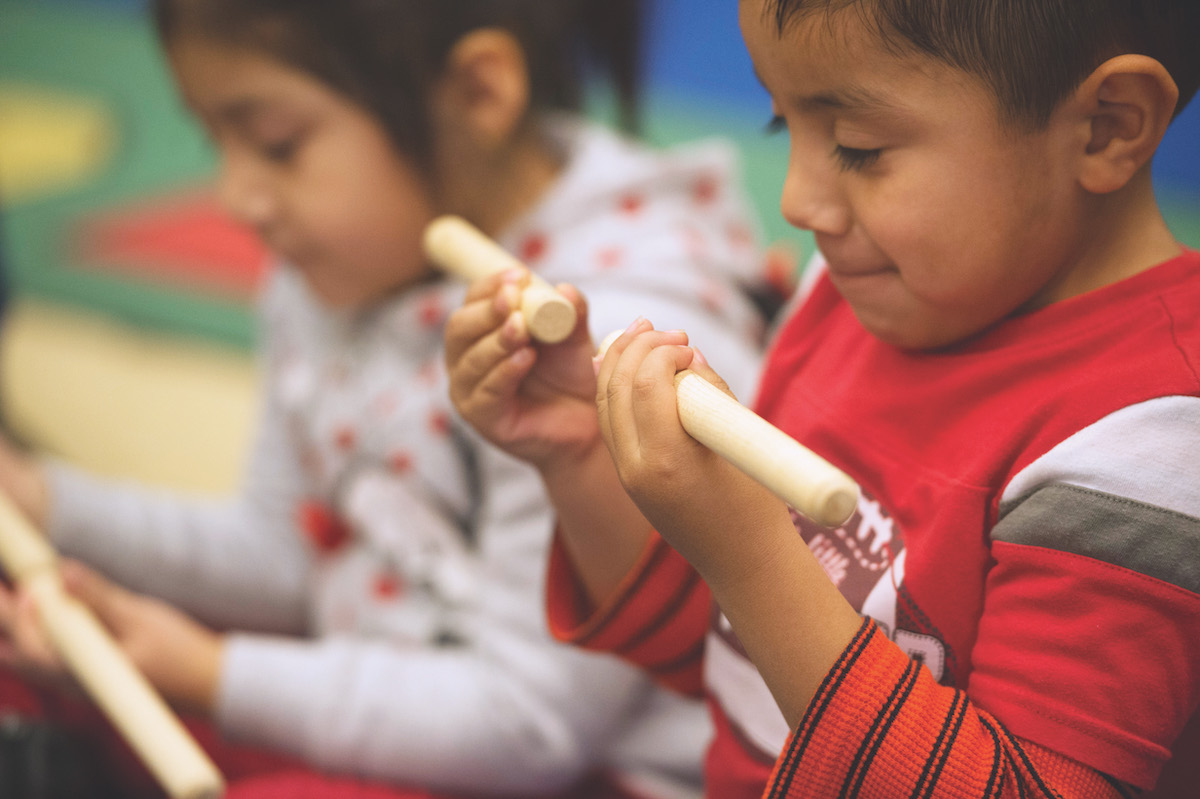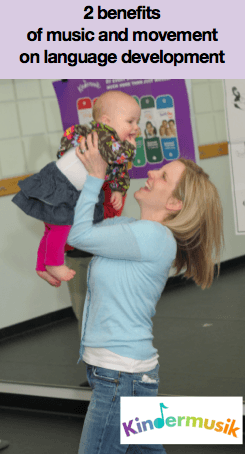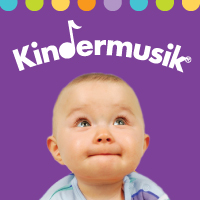Everyone speaks music – young, old, all nationalities – through lyrics and through movement. Music truly is the universal language. As such, music is the one thing that parents all around the world can use to help them get through their day.

5 Ways You Can Hokey-Pokey Your Way through Everyday Parenting
In the car
It’s easy to stream music on your phone, pop in a CD, or turn on the radio. In fact, there’s really no better place than the family car to develop listening skills, expose your child to a variety of musical styles, and best of all, create memories.
Need a good starting point for turning your family taxi into a happening, happy music experience? Click here for your free “family taxi” playlist!
At naptime and bedtime
Gentle, quiet music can calm and soothe a child to sleep, even when he thinks he’s not tire. Plus it helps block out the noise when your neighbor decides to mow the lawn in the middle of nap time. Sleep time can also be a great time to expose your child to a little Bach or Mozart as well as those beloved lullabies.
On a rainy day
Music is like indoor sunshine on a rainy, dreary day. Depending on what kind of music you choose, music can be a quiet accompaniment for play time, inspiration for a parade around the house, or a giggly, happy way to dance the rainy day blues away. (Dance long enough, and they’ll be more than ready for a nice long nap too!)
You can also take a video field trip without leaving the house. You’ll love this “Big Back Yard” field trip that takes you and your child to see some beautiful butterflies, up close and personal!
Before dinner
It can be really tough to juggle making dinner and keeping a little one happy, especially towards the end of the day. Turn on some bright, happy music, get out some wooden spoons and plastic bowls, and let the concert begin! And while you’re waiting for that pasta to boil, why not take a spin around the kitchen with your child as your dance partner?
For family together time
Whether you have some child-friendly instruments or you improvise, there’s nothing that bonds a family more than making music together in a family jam session. Or maybe you decide to establish a little ritual to welcome Dad home each day by doing a little dance together – like the Jungle Hokey-Pokey! No matter how you choose to speak the language, music is the delightful common thread that binds hearts together, making memories that truly will last forever.
Why Kindermusik? With an expansive music library, Home Materials, and rich resources for parents (Did you grab your family taxi playlist or try the Jungle Hokey-Pokey yet?), Kindermusik classes provide plenty of musical inspiration for singing, dancing, and playing your way through the daily childhood routines that can be made happier and a whole lot easier with music!
Find out more about Kindermusik at www.Kindermusik.com!










 almost exclusively on what they hear in order to acquire language. Children’s brains make a connection based on what they experience (being lifted high or twirling around) and hear (“up” or “twirl”). So, when a parent of caregiver lifts a child high “up, up in the sky” or “twirls around like a leaf” while singing the songs in Kindermusik class, young children learn the word and understand the concept. Later, children will discover those words correspond to marks on a page which eventually leads to letter recognition and reading.
almost exclusively on what they hear in order to acquire language. Children’s brains make a connection based on what they experience (being lifted high or twirling around) and hear (“up” or “twirl”). So, when a parent of caregiver lifts a child high “up, up in the sky” or “twirls around like a leaf” while singing the songs in Kindermusik class, young children learn the word and understand the concept. Later, children will discover those words correspond to marks on a page which eventually leads to letter recognition and reading. Come experience for yourself the benefits of music!
Come experience for yourself the benefits of music! 

 for babies
for babies





 From breakfast to playtime to naptime. That’s one routine. Bath time, story time, then bedtime. That’s another. Cartoons or waffles on Saturday morning – that’s a routine, too!
From breakfast to playtime to naptime. That’s one routine. Bath time, story time, then bedtime. That’s another. Cartoons or waffles on Saturday morning – that’s a routine, too!  Need some inspiration for talking or singing to your baby? Enroll in a Kindermusik! You’ll receive tips and ideas in class and interactive Home Materials to help the music, learning, and fun last through the week at home. It’s easy to get started with a
Need some inspiration for talking or singing to your baby? Enroll in a Kindermusik! You’ll receive tips and ideas in class and interactive Home Materials to help the music, learning, and fun last through the week at home. It’s easy to get started with a 
